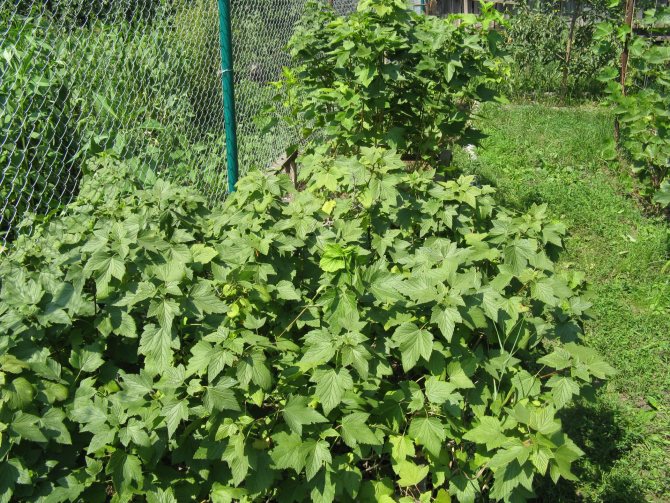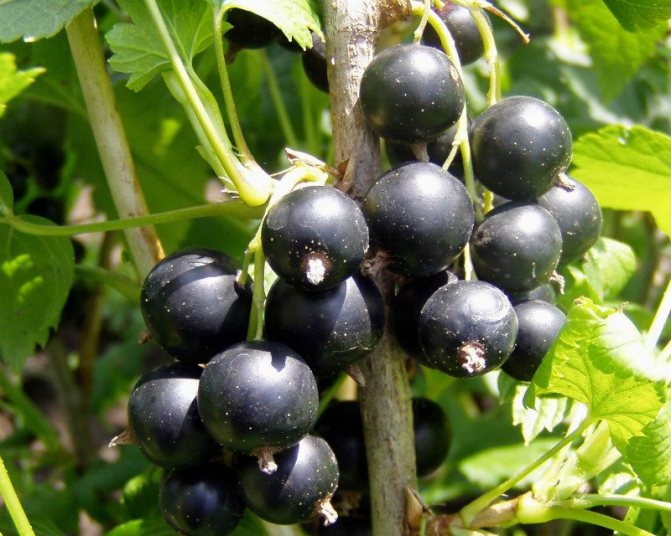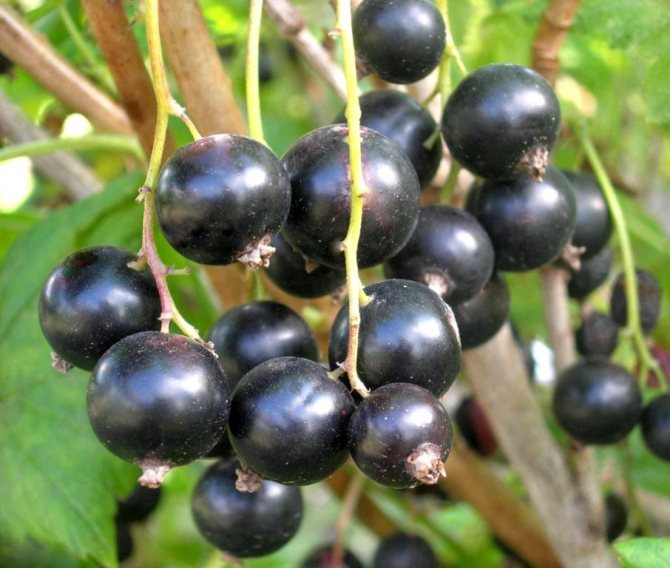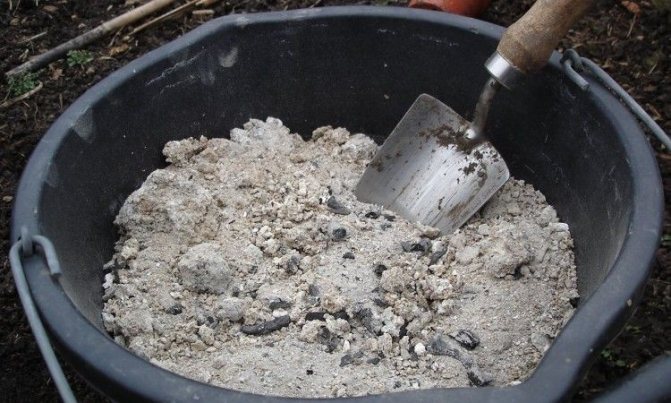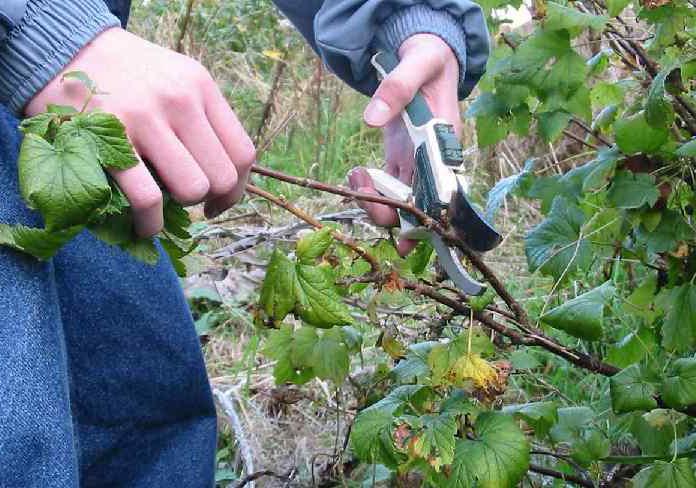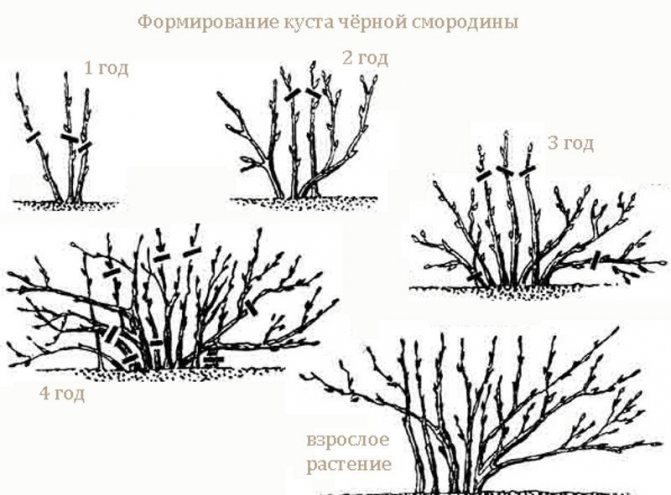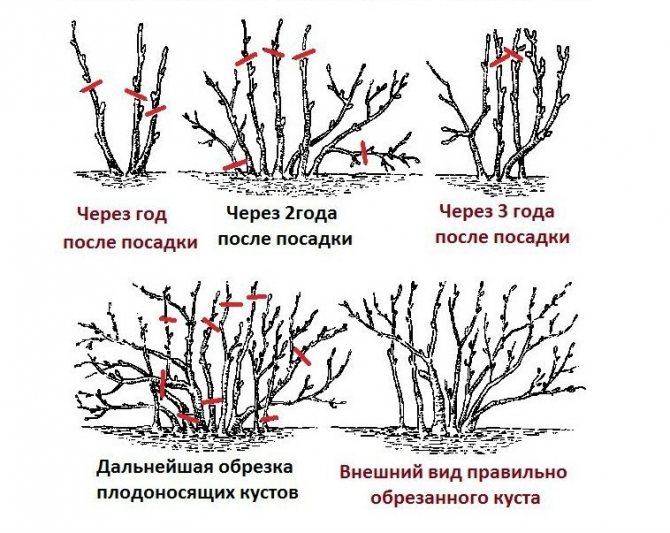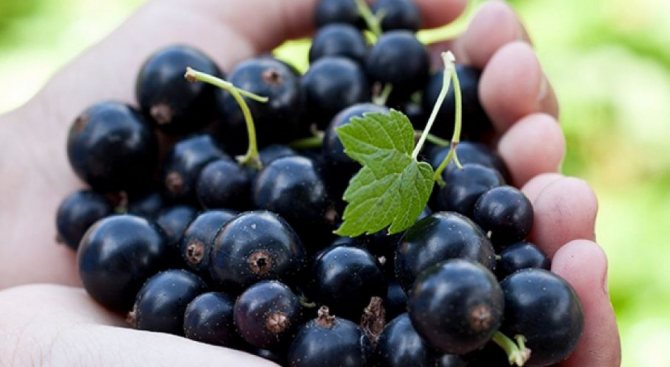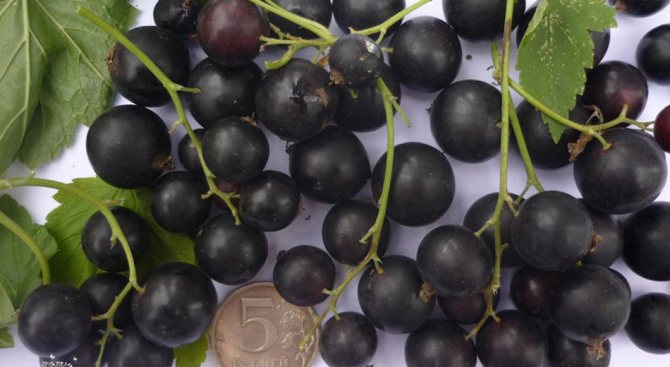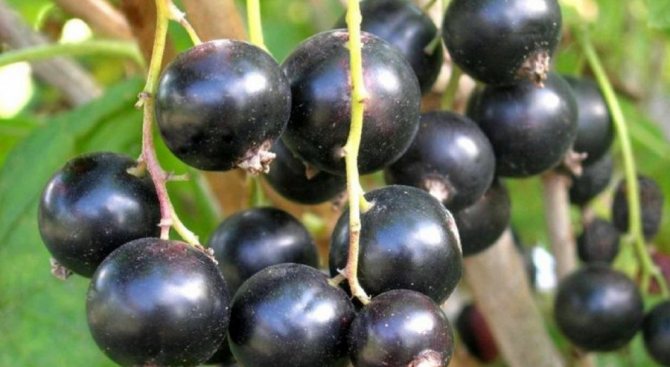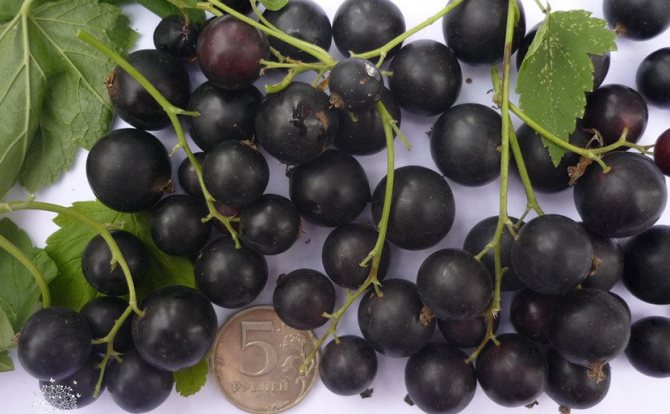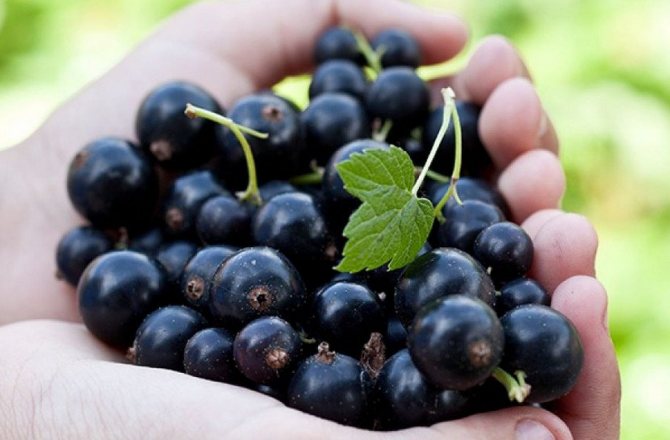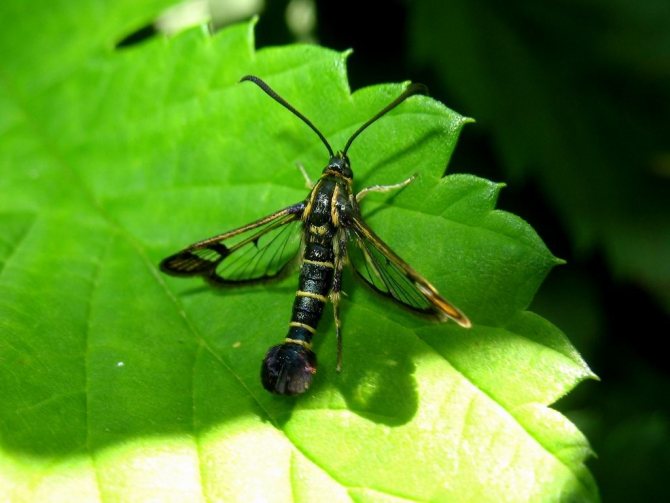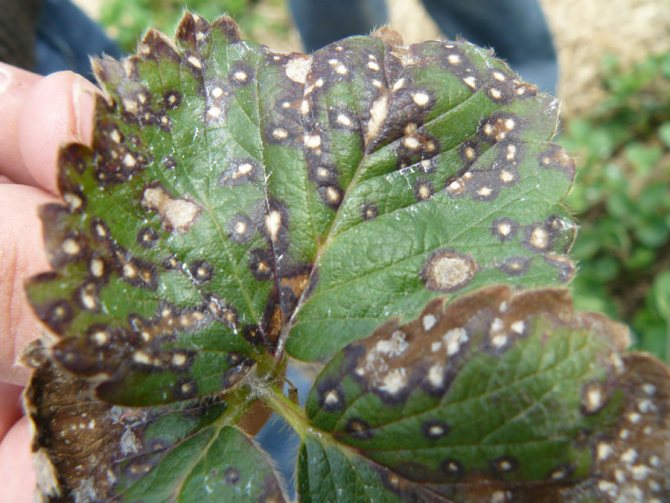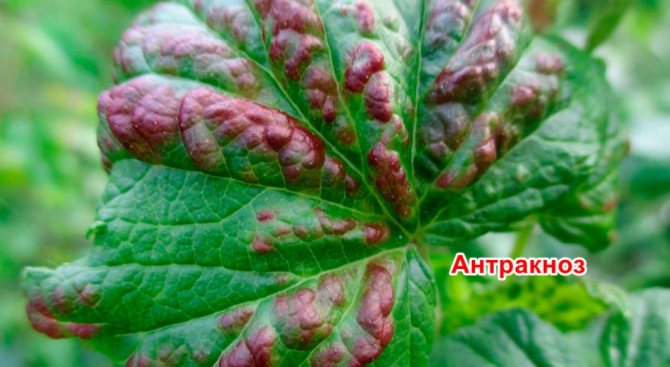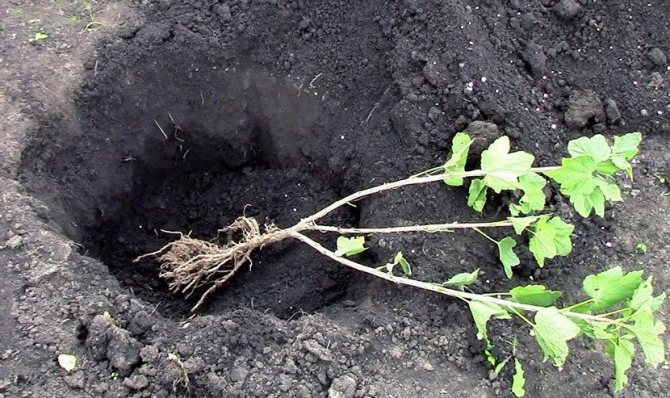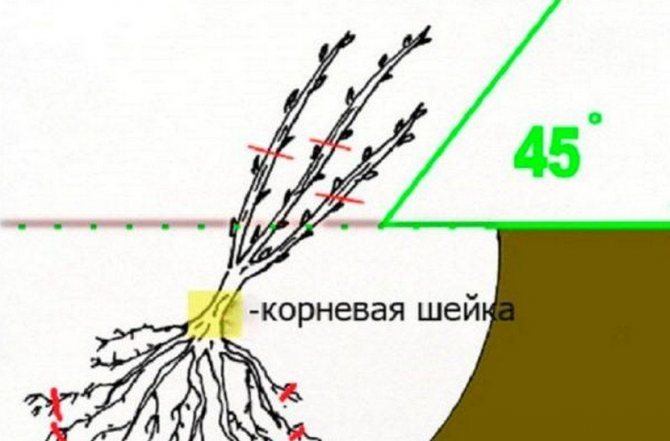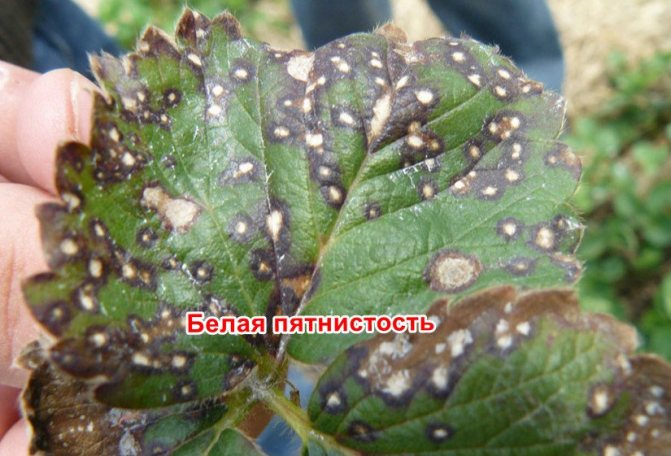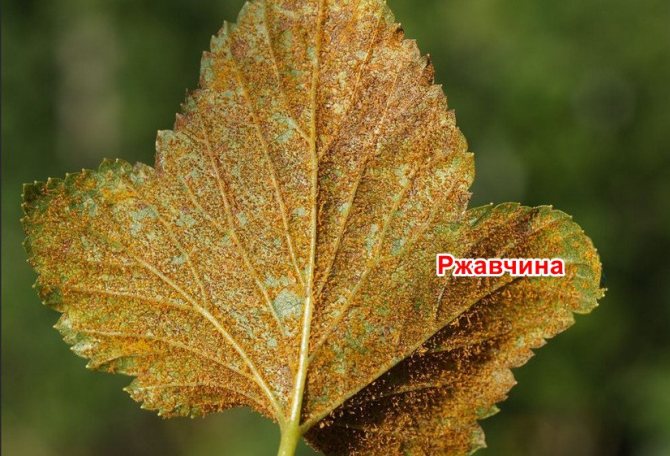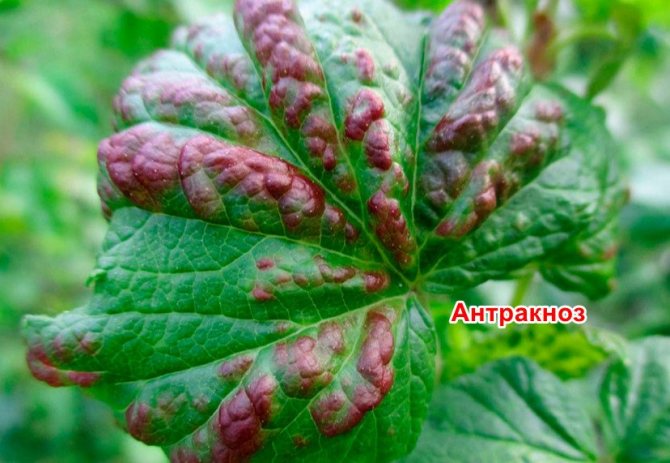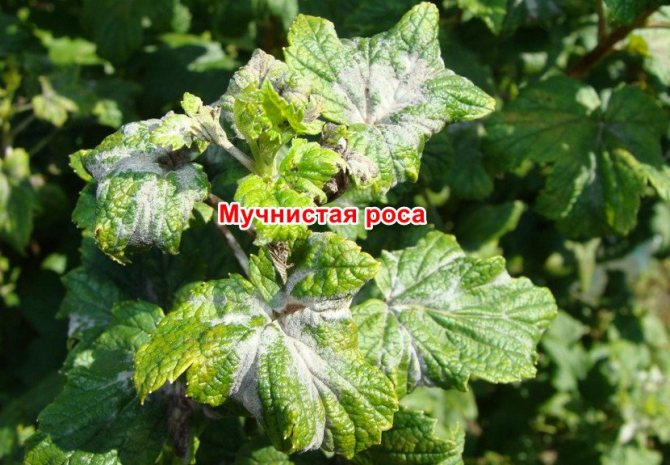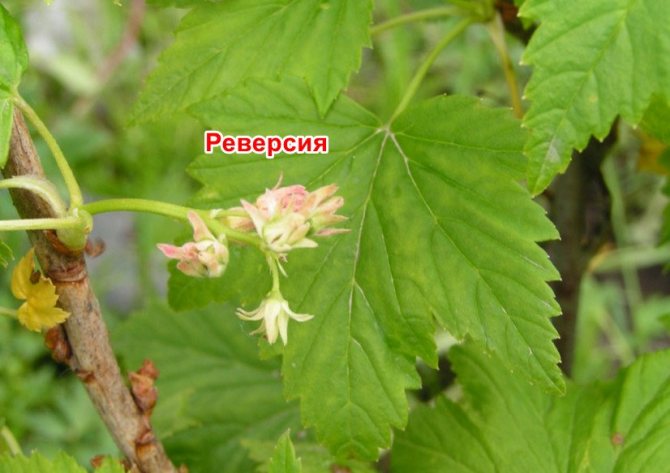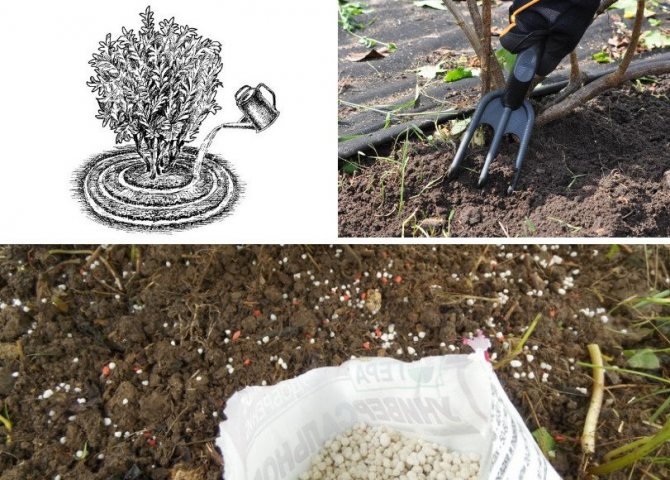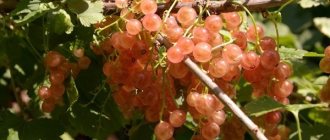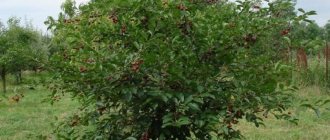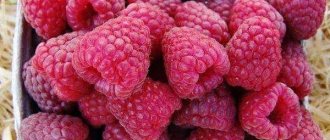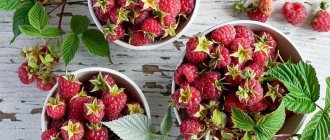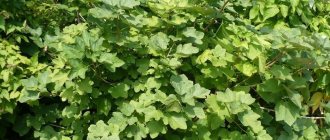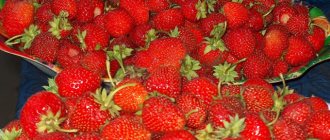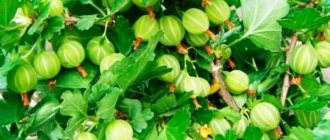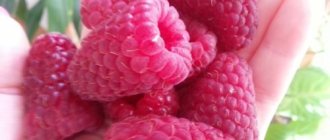Pygmy is a frost-resistant black currant variety that brings a rich harvest. The plant is famous for its beneficial properties, the bush is unpretentious in care, currant with strong immunity, belongs to the early species.

Blackcurrant Pygmy
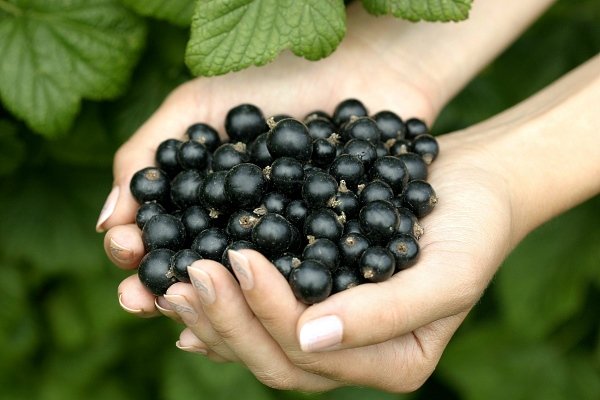

the advantages of the "Pygmy" variety have made it one of the most beloved and widespread among our country gardeners
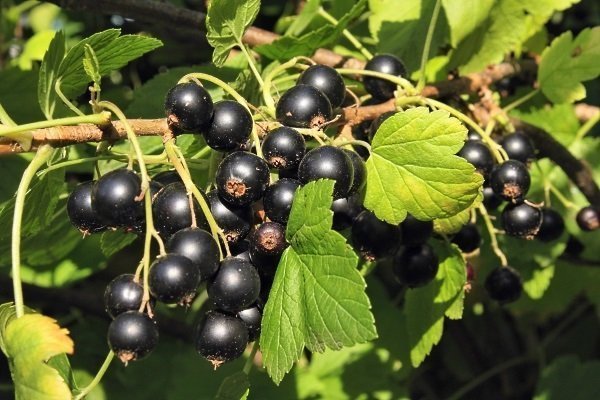

berries of currant "Pygmy" during variety testing showed an average weight of 2 grams, but in practice they grow by 6 grams, and some up to 8 grams
Description of the black currant variety Pygmy
Pygmy is a medium-ripening currant. The plant reaches a height of two meters. In addition to its impressive height, the currant has overall dimensions. The branches are wide, the foliage is average. In the first year of its existence, the plant has pink shoots without special pubescence.
The leaves are dark in color, large, the green plate is glossy. At the base of the leaf, there is a small notch in the form of a circle or triangle. The side plates look to the sides, the central vein is at right angles to the base of the leaflet. Straight teeth are visible on it.
Small flowers of light shade. On one brush, you can count up to 10 berries. Fruits are elastic, weight of one - from 2.5 to 6 g. The surface is shiny, saturated black shade, the skin is not thick. The pulp contains a small amount of seeds, the berries are sweet.
Drought resistance and frost resistance
Experienced gardeners claim that the currant variety can take root in any climatic zone. The bush can withstand drought, scorching sun and too rainy days without any problems. This does not harm the crop. The bushes survive even on frosty days. The maximum temperature that the bush can withstand is up to 35 degrees below zero. This feature made it possible for gardeners to grow a plant in Siberia, the Urals and the Far East.
Ripening period and yield
The variety belongs to the large species. It is possible to collect about 6 kilograms of berries from one plant, which indicates a high yield of Pygmy. During an unfavorable year, the indicators are halved. When growing a species for industrial purposes, one square meter. m accounts for 2.5 kg of berries. Currants are of medium ripening, berries ripen for a long time.
Overripe fruit loses important vitamins and minerals, the taste becomes less pronounced. Berries should be picked on time.
Gardeners' reviews indicate that the Pygmy fruits do not contain the sourness characteristic of the plant. The fruits are tasty, juicy and sweet. Sugar appears when there is enough sun and warmth. The rating of the Pygmy tasters is high. When fully ripe, the fruits do not fall off the plant.
For an overview of the black currant "Pygmy", see the video below:
Transportability
The black currant harvest of the Pygmy can be stored for about one month. The main thing is to create the proper conditions for this - a temperature of about +14 degrees. The transportability of the variety is good, the berries are dense, the skin does not allow them to burst during movement. However, attention should be paid to the containers in which the currants will move. The boxes must be secure and completely closed.
Using
Pygmy fruits are used for the preparation of various preservation. The fruits can be used fresh.Due to its natural sweetness, no additional sugar can be added.
At home, currants are stored for about three days, so that the fruits lie longer, they are frozen, dried or canned. In this form, they are stored for about six months.
Testimonials
- Katerina, 38 years old: “I have long wanted to have black currants on my site, everyone loves to eat it in winter, grated with sugar, but I still could not find a good variety. Only last year I planted three Pygmy bushes and this year I tasted its berries, they are so juicy and sweet that children eat currants without sugar. ”
- David, 52 years old: “I have been growing black currants for several years at my dacha, and I really fell in love with its Pygmy variety. Its bronze buds cannot be confused with any other varieties in spring, and the berries are in no way inferior in size to the large currant - Yadrenaya. "
Advantages and disadvantages of the variety
Why do owners of their own sites love Pygmy so much?
- The appearance and taste of the fruit. The bush brings berries every year, the currants do not get smaller over time.
- Immunity to natural whims. Currants without damage to the crop endure drought, heat, heavy rains and cold winters.
- Strong immunity. The shrub is resistant to many fungal diseases. Pygmy growers do not know what anthracnose and powdery mildew are.
- Self-pollination. Pollinating varieties will help the Pygmy to increase yields, but even without them, the plant copes well with this.
- The versatility of berries and benefits for the body. Currants are eaten fresh and often preserved. The variety contains a large amount of macronutrients and microelements. Almost all vitamins are retained in berries even after prolonged heat treatment.
- Elementary care. Knowledge of simple methods of caring for currants will be enough for you. Even a novice gardener can grow a Pygmy.
Disadvantages of currant pygmy:
- Weak immunity to septoria. It is necessary to regularly carry out preventive measures.
- The bush can eat currant mites.
Growing
It is not difficult to grow a Pygmy in a garden, you need to know the basic rules. Be careful and careful, because the fruiting of the plant will depend on the correctness of your actions. Pygmy bushes need regular watering and maintenance.
Sapling selection
Before purchasing a seedling, pay attention to these indicators:
- Age. For planting in open soil, the seedling should be one or two years old.
- Root system. Elastic, without rot and damaged lobes.
- Branching. The thicker the plant, the faster it will take root and the better it will develop.
- Sapling height. No more than 30 cm.
- Lack of greenery.
Buy seedlings for planting in special stores, do not trust market sellers. It's easy to change the variety.
Prepare a stimulating mixture, place blackcurrant seedlings in it for two days. Thanks to this procedure, the cutting will quickly take root in the ground. To get rid of pests and diseases, add potassium permanganate to the stimulating solution, treat it with a clay mash a couple of hours before planting the plant.
Boarding time
The optimal planting time is the autumn season. The best period is the last days of September or early October. Cuttings have time to take root in the ground before the onset of the first frost. It is necessary to adjust so that about 4 weeks remain before the cold weather. Depending on the climate, the flowering of currants lasts 40 days. Planting begins early in the spring, after warming. The main thing is to cope before the start of sap flow.
Soil preparation
Pygmy currants are not demanding on lighting. It is desirable that the site receives a lot of sunlight and heat, but in shady areas the plant also grows and develops well. Find a location with little wind.Air currents will help the plant to quickly cope with fungal diseases, and the wind will also dry the soil from melting snow.
The bush can withstand a large amount of moisture, but it should not be planted close to groundwater. The plant will not grow and develop in such conditions. An excellent way to grow Pygmy is heavy loamy and slightly acidic soils. The taste of berries directly depends on the choice of a site for planting a bush.
Landing scheme
The main stages of planting:
- Prepare a hole (dimensions: 50x50 cm, depth 60 cm). The favorable distance between the bushes is 1.2 m.
- Place a bush in the recess, straighten the root system.
- The seedling should be in the hole at an angle. Hold the Pygmy in this position and dust it with earth.
- The lower buds may be under the soil. About 4 buds should remain on the surface.
- Tamp the top layer of soil.
- Water the bush.
- If the soil has been pre-fed, then additional minerals do not need to be added.
The specifics of planting in the open field
To get a full-fledged annual harvest, it is recommended to start with preliminary work on soil preparation, selection of seedlings, and proper planting.
Predecessors and neighbors
Pygmy currants are planted after cereals, annual grasses, root crops, corn.
Favorable neighborhood:
- onions, garlic, kidney mite repellent;
- golden currant, honeysuckle;
- apple trees, plums;
- strawberries, herbs.
Raspberries inhibit the growth of all berry bushes, including the Pygmy variety. Gooseberries and black currants have a common pest - moth. Culture competes with sea buckthorn for resources. It is not recommended to plant a juniper nearby - a carrier of rust.
Pygmy not only reduces fruiting due to unsuitable neighbors, but also itself negatively affects the development of apricots, pears, cherries, cherries planted in the neighborhood.
Site selection and preparation of the landing pit
Pygmy currants adapt to harsh growing conditions, but bear fruit better in favorable conditions. The plant is suitable for a place illuminated during daylight hours, protected from drafts with weakly acidic loose fertile soils. The moisture-loving culture does not like the accumulation of melt water, does not tolerate constant flooding by groundwater that rises above 1.5 m from the surface.
The area allotted for the culture is dug up, weeds and plant residues are removed. A planting pit is prepared with a depth and width of 0.5 m. The upper arable layer is combined with the following ingredients:
- 2 buckets of leaf humus, compost;
- 1 tbsp. simple superphosphate;
- 30 g of potassium sulfate;
- 1-2 tbsp. wood ash.
According to the rules of agricultural technology, a pit for currants is prepared 2 times larger than the root system.
Dates and technological process of disembarkation
Pygmy currants are planted in spring, when the soil dries up, the air temperature does not drop below + 10 ° C, the buds on the seedling are at rest. In the fall, more vigorous shrubs are planted in October if the climate is favorable for the rooting of the plant before the onset of a sharp cold snap.
The lateral shoots are cut off from the seedling, leaving 2 buds each, the roots are dipped into a clay talker, Epin, Kornevin for better culture survival.
Algorithm for planting currant Pygmy:
- a small hill is built from the prepared soil mixture at the bottom of the pit;
- lower the seedling, straighten the roots along the slopes of the elevation;
- holding the bush at an angle of 45 ° C, pour out the remaining substrate;
- compact the soil;
- make a groove, water, mulch.
At the end of planting work, the root collar should be in the ground 6-10 cm below the surface. This planting method provides for the fastest growth of lateral roots, the formation of shoots.
When planting several currant bushes, the distance between them is 2–2.5 m.
Care features
The gardener will receive a rich and useful harvest only if proper care has been taken for the currants. The care consists in regular watering, protection from insects and diseases, proper pruning of branches and fertilization.
Tillage
The soil on which currants germinate and develop needs separate care. Avoid weeds. Work regularly with a ripper, hoe, or cultivator. Loosening helps aerate the earth, it is saturated with oxygen. The cultivated soil quickly absorbs air, the root system develops better.
Harvesting
Shrubs of this variety bloom for about 40 days. The berries begin to ripen in the middle of summer. Harvesting takes about 1.5 months. In some regions, it is 1 month, everything directly depends on the climate in which the plant germinates.
From one bush, you can collect about 4-5 kg of the crop. The black currant variety Pygmy is self-pollinated with a regular yield. Maximum from one bush - 5 kg of yield. Berries are nutritious when eaten and fresh. Jam, jam and compotes are made from them. Currants do not lose their minerals and vitamins when frozen or dried. Fresh fruits are stored in the refrigerator for up to one month.
Appearance, characteristics of berries, ripening time, yield
The bushes of the variety are distinguished by their compact size, slightly spreading branches and a medium thickened crown. Plant height rarely exceeds 1.5 m. Young shoots have a green-pink tint, with large glossy foliage of bright green color. The leaves are distinguished by their rounded shape and the presence of a triangular notch. The buds of the bush are medium in size and oval-rounded. Their color is brown.
Did you know? Black currant berries are often used in the preparation of a natural blue-violet dye.
Currant inflorescences of a pale shade and small size. The main shape of the flowers is saucer-shaped. One brush contains up to 15–20 berries.
The fruits of the currant of the variety in question grow on a thin green stalk, they are quite large - the mass can be from 2 to 8 g. The skin is black, thin and smooth. According to reviews, the taste characteristics of Pygmy currants are high, with a pronounced sweetness and aroma.
By their composition, currant fruits are an irreplaceable product for the human body. 1 berry contains a whole complex of vitamins (vitamins A, D, E, K, group B vitamins), as well as micro- and macroelements (calcium, potassium, silicon, magnesium, sodium, sulfur, phosphorus, boron, vanadium, iodine, cobalt , iron, copper and many others).
Read about Perun currants.
The ripening time of a crop strongly depends on the care of the plant and the growing conditions - on average, fruiting occurs in a period of 1 to 1.5 months (beginning - mid-July). The yield of the variety has high rates - from one bush you can collect from 2.5 to 5.5 kg of selected berries.
Protection against diseases and pests
The main signs of a disease in a plant are: yellow spots, a dark leafy plate with tubercles, rotting of branches and berries, white bloom and an unpleasant odor. If you find at least one such sign in a Pygmy, you need to treat the bush with special fungicides. Insects are removed with their own hands or by chemical treatment.
Preventive actions against diseases and pests of black currant Pygmy:
- Thinning of bushes, regular pruning of branches.
- Mulching near-stem soil and weed removal.
- Garbage collection.
- Shrub processing with folk remedies.
Reviews of gardeners about currant Pygmy
Blackcurrant Pygmy is an excellent choice for growing shrubs in the garden. With proper planting, the plant will delight the owner for about 10 years, and with proper care this period can double.
Black currants are highly regarded for the beneficial properties of berries, although not everyone likes their excessive acidity.The berries of hybrid plants, like the Pygmy currant, possessing unique qualities, have acquired a dessert sweet taste and large-fruited as a result of selection work. Derived by V.S. Ilyin in the South Ural Research Institute on the basis of the currant Seedling Golubki and Bradthorpe, the Pygmy currant variety has been presented in the State Register since 1999. The plant was recommended for cultivation in Siberia and the Far East, but due to winter hardiness, endurance and yield, it spread over the European territory of Russia and neighboring countries.
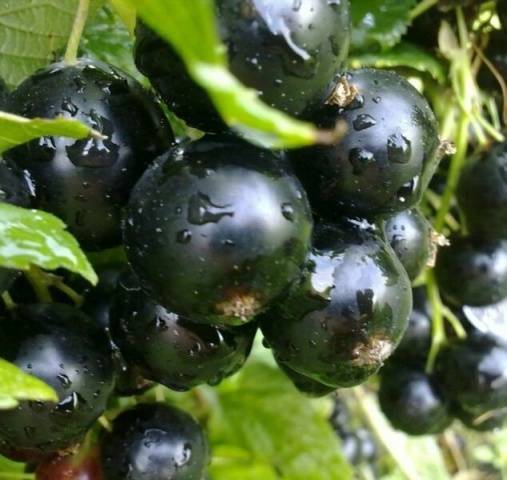

Storage rules
The characteristic large Pygmy berries should be picked as soon as they are fully ripe. When overripe, they crumble from the branches and rot, attracting harmful insects.
To harvest, it is worth waiting for warm dry weather and not leaving the site in the early morning. Wait until the morning dew is completely dry.
To minimize damage and loss of yield, you need to remove the berries with whole brushes and put them in small or medium-sized baskets or boxes.
Important! The container for "Pygmy" should be covered from the inside with a soft styling material. It is desirable that the container be flat and wide. In such conditions, the berries lying on top will put less pressure on the bottom layer.
The shelf life of berries at home is limited to an interval of 2-3 days, which is a sufficient period for their consumption, or processing for most gardeners. To preserve the Pygmy berries for a longer period, you need to choose one of the long-term storage options.
Cooling. The faster you remove the berries from the bushes and bring them to the refrigerator, the better. It is advisable to place open packages or other containers with berries in a special compartment for fruits and vegetables, which is found in most modern models of refrigerators. At the same time, it is better not to wash the berries and tear them off the stalk. It is advisable to cover the container with a damp cloth and remove apples, pears and bananas, which emit ethylene, as far as possible. This way the shelf life of the crop can be extended by 13-15 days.
Freezing. In preparation for freezing, the berries are sorted out, the stalk is removed, washed and dried thoroughly. "Pygmy" is placed in a freezer in a fast, or "shock" freeze. After that, the currants are laid out in special bags with a sealed fastener, or containers for permanent storage. The shelf life of the berries is not limited, but after six months the berries will lose a significant part of their beneficial properties and taste.
Important! It is undesirable to defrost and re-freeze the Pygmy currants.
Drying. Dried Pygmy berries become sweeter. There are several drying methods. The natural way is to spread it in one layer, stringing it on threads, or hanging it from the ceiling. Either high-tech - with the help of an oven, or an electric dryer. It is better not to place berries prepared in this way next to products with a pungent smell. The berries are stored in a cool dry place packed in bags without air access.
Canning. Any preparations made of black currant "Pygmy" have excellent taste. They require less sugar than other varieties of berries. Fresh currants mixed with sugar retains maximum flavor and health benefits, but requires refrigerated storage.
Characteristic
Mid-season black currant Pygmy begins to ripen in late June, early July. The flowers unfold alternately, and the harvest takes up to three weeks or more. From one bush, subject to the requirements of agricultural technology, 5.5-5.7 kg of tasty and aromatic berries are harvested, or up to 22 t / ha. The average yield for industrial cultivation reaches 6.5 tons per hectare. An increased yield is characteristic of the variety, since the Pygmy currant bushes are self-fertile. Plants are quite unpretentious and take root easily. The variety bears fruit annually.
The black currant bush Pygmy tolerates frosts down to -35 degrees and summer 30-degree heat. Plants are undemanding to the soil, but they like timely watering and feeding. The variety is resistant to common diseases and needs preventive spraying. Sensitive to septoria and kidney mite attacks.
Frost and drought resistance
The variety is cold-resistant - this fact has been proven by many years of testing the plant in different climates. Without any losses, quite calmly, the shrub can withstand frosts up to +20 degrees. In areas to which it is zoned up to -35 degrees.
As for drought resistance, the plant can feel quite comfortable, even if it is not watered for a long time. If it rains often, then watering may not be required at all throughout the growing season. However, if there is a drought for a long time, you still need to water the currants. Especially this recommendation concerns the period of ovary formation.
Description
Black Pygmy currant bushes are tall, reach 1.5-2 m, compact, branches are often directed not to the sides, but up. Young shoots are green, with a slight anthocyanin tinge, not pubescent. Single oval brown buds extend from the branches at an angle of 30 degrees. Experienced gardeners in their reviews and descriptions of the black pygmy currant indicate that it is easy to distinguish it from other varieties even in early spring by its characteristic bronze color of the buds. The leaves are large, five-lobed, wrinkled, shiny, slightly concave in the middle, with small teeth. The inflorescences of the Pygmy variety are of medium length with 6-10 pale pink flowers.
Berries on a long green stalk, round, large, up to 5-7.5 g, with a thin, black skin. The pulp is sweet, with the expected currant flavor and few seeds. Pygmy currant berries are famous for their balanced composition of sugar, acid, trace elements and vitamins. The sugar content is 9.4%, in 100 g of berries 150 mg of ascorbic acid. The variety was highly rated by the tasters: 5 points.


Pruning
For work on the formation of bushes, the autumn time is suitable, when the leaf has already fallen, and the spring time before the buds open.
They begin to cut the currants immediately after planting, when the stem is shortened to 20 cm, leaving 2-3 buds on it. A year or a year and a half after planting, 3-4 strongest shoots are left on a young bush, and the rest are cut out at the root. After another year, these shoots are shortened by one quarter, and the side branches are cut off, which are directed downward and towards the center of the crown. From the side branches growing upward, 3-4 pieces are left on each stem at approximately equal intervals. Of the new, annual shoots, 3-4 are again left. In the third and fourth years, pruning is carried out in the same way. By the fifth year, the Pygmy bush should be fully formed and consist of 12-15 branches.
There is also a sanitary pruning of currant bushes. It consists of removing diseased, broken branches, as well as those that grow down or in the center of the crown. You should also remove branches that rub against each other and damage the bark. Sanitary pruning is carried out as branches are found to be removed.
Growing
According to gardeners, Pygmy currants are planted from the beginning of September. Before the onset of cold weather, a plant needs two weeks to take root. In spring they are planted very early, in March or early April, when the buds are not yet blooming.


Requirements for seedlings
When buying Pygmy currant seedlings, you need to carefully choose them.
- Optimal age for planting: 1 or 2 years old;
- The volume of the root system is not less than 20 cm;
- Sapling height - 40 cm;
- The roots and stem are firm, fresh, without damage.
Site preparation
For black pygmy currants, they select a sunny place from the south or south-west direction from buildings, a fence or a large garden. In partial shade, the berries will be small. The groundwater on the site should not rise above 1.5 m. You should also avoid places where melt water stands for a long time in spring.The best soil for the Pygmy variety is loose, with a slightly acidic reaction, not swampy or dry sandy. The pits are prepared in advance.
- When digging the soil in summer for 1 sq. m, 10 liters of compost or humus, 30 g of potassium sulfate, 200 g of superphosphate are introduced;
- Wood ash (1 l), a good potash fertilizer, is often used instead of mineral preparations;
- Digging up a plot for Pygmy currants, carefully select wheatgrass roots from the soil;
- Distance between bushes is 1.5 m;
- The depth of the hole is 0.4-0.5 m, the diameter is 0.6 m;
- The top soil layer is mixed with humus in a 1: 1 ratio, 300 g of wood ash, 30 g of potassium sulfate, 120 g of superphosphate are added to the mixture;
- Drainage material is laid at the bottom and covered with an earthen mixture. The hole is covered with a film, slate fragments or other improvised means so that the fertile soil does not erode.


Landing
When it comes time to plant black pygmy currants, after purchase, the seedlings are placed in a chatterbox made of mullein and clay solution for half an hour.
- Before planting, a bucket of water is poured into the hole, sprinkle the wet soil on top with dry and put the seedling, carefully leveling the roots;
- The seedling is placed vertically or with an inclination of 45 degrees;
- The root collar of the Pygmy currant is sprinkled on 5-7 cm earth so that the shoots grow well;
- A side is formed along the edges of the hole, 5-8 liters of water are poured. Water again after 3 days;
- The surface is mulched with sawdust, hay, straw up to 7-10 cm thick to maintain moisture.
Some gardeners advise cutting the stems of currant seedlings to 2-3 buds in order to stimulate the growth of shoots in the spring. Others are against this method, stating that a healthy shoot should be left completely for the winter. Before frosts, the seedling is spud with earth and mulched. In the spring, the currant seedling is freed from the poured soil, keeping the sides for irrigation.


Currant bushes bear fruit in the third year, mandatory constant watering and feeding. Loosening of the earth is shallow, up to 8 cm.
Watering
The soil near the currant bushes is watered so that it is moistened to a depth of 40 cm.
- During the dry period, the Pygmy currants need to be watered regularly every 2-3 days, 30-40 liters for each bush;
- After watering, put fresh mulch;
- Important watering during the ovary formation phase, at the end of May, and during the ripening of berries, in July;
- Moisture-charging watering of bushes is carried out in October.
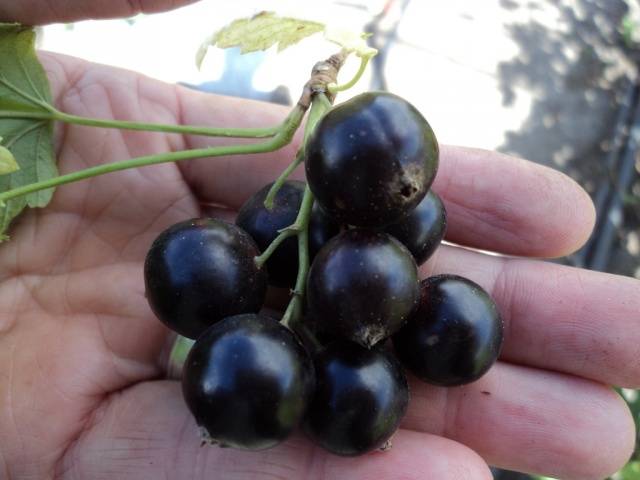

Top dressing
The next season after planting, the currants are not fed if the soil in the hole and on the site has been enriched with fertilizers.
- The first feeding of black currant with natural and nitrogen preparations (30 g of urea) is given in the spring, one year after planting;
- After harvesting, the bushes are fed with 12 g of potassium sulfate and 50 g of superphosphate per 1 sq. m of soil when digging;
- Adult currant bushes are sprinkled with 30 g of "Nitrofoski" in spring and then watered abundantly;
- Before the formation of berries, the bushes are treated with a solution of 30 g of copper sulfate, 5 g of potassium permanganate and boric acid per 10 liters of water;
- Regular application of microelements as part of complex fertilizers - boron, zinc, manganese, copper increases the resistance of currants to fungal diseases.
Pruning
In spring, pygmy currant bushes are carefully examined and damaged branches are removed. Sharp and clean tools are prepared for work.
- In the fall, thickening shoots are cut out that grow inside the bush;
- The largest harvest will be from 2-3-year-old shoots, they are left;
- 5 year old branches are removed;
- A full-fledged bush consists of 15-20 shoots of different ages;
- Shoots bent down are cut to a branch that grows vertically;
- An 8-year-old bush is thinned out, leaving only 2-year-old shoots.
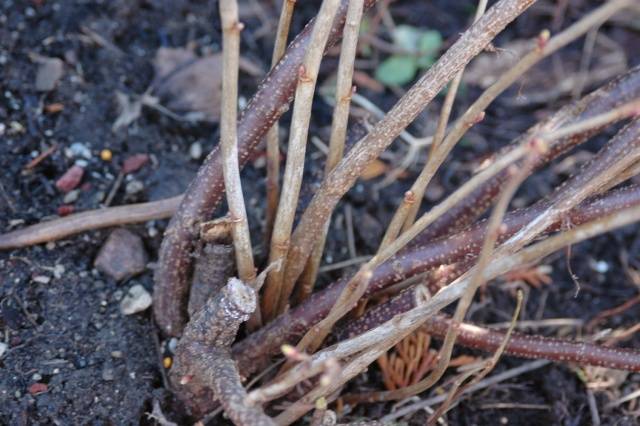

How to plant a crop correctly
Black currants are best planted in early September, even in temperate regions. For the time remaining before frost, the bushes will have time to adapt to new conditions of existence and accumulate enough nutrients for wintering.In subtropical climates, the planting can be moved forward a month. Plan it so that there are 5-6 weeks before frost.
The best option for planting is 2-year-old seedlings. Their root system is developed, fibrous, the roots are about 15–20 cm long. Shoots are not shorter than 35–40 cm, with growth buds.
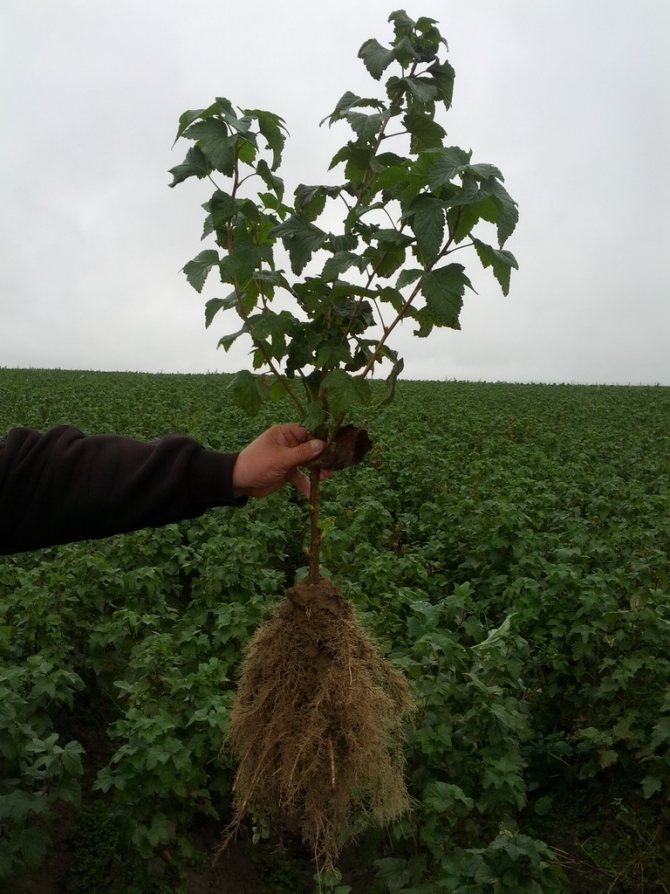

High-quality planting material is the key to a bountiful harvest
Seat selection
Choose a flat open area for the black currant Pygmy, well warmed up by the sun. In principle, the culture also tolerates light partial shade, but with this arrangement, the berries become smaller, the yield is reduced. At a short distance, there should be some kind of obstacle - without casting a shadow, it will protect the bushes from sharp gusts of wind.
Any soil is suitable, except for very light sandy, waterlogged and excessively acidic. Fertility and good aeration can be created when preparing the planting pit.
Pygmy loves moisture, but not stagnant moisture. Therefore, immediately exclude the lowlands, in which melt water stands for a long time in spring, and cold moist air accumulates the rest of the time.
When planting several bushes at once, it is better to place them in a row, leaving about 2 m between the seedlings and about 2.5 m between the rows. It is difficult to care for thickened plantings, they almost inevitably become infected from each other, the plants do not have enough nutrients.
Site preparation
The selected area is dug up, at the same time getting rid of weeds, stones and other debris. The planting pit is prepared about a month before the planned planting of Pygmy seedlings. Too deep a hole is not needed - the roots of the black currant are located quite close to the surface. Enough 40–45 cm in depth and 50–60 in diameter.
The earth that is taken out of the pit first is folded separately. This is the most fertile layer. To the removed substrate add 20-25 liters of rotted manure, a glass of simple superphosphate (or half - double) and 2 tablespoons of potassium sulfate. An additional 0.5 kg of dolomite flour or a liter can of wood ash is added to the acidic soil.
The finished mixture is poured back, forming a small hill at the bottom. Before planting, the pit should be covered with something waterproof to prevent the rains from eroding the soil.
Planting a seedling in the ground
The procedure for planting a Pygmy seedling in the ground is not difficult:
- A couple of days before the procedure, the roots are placed in water at room temperature with the addition of any drug that stimulates root formation - Epin, Effekton, Heteroauxin, Kornevin, potassium humate. It is also useful to put very little potassium permanganate into the container in order to destroy the existing spores of pathogenic fungi, viruses and bacteria.
- When a few hours remain before planting, the roots are coated with gruel made from fresh cow dung mixed with powdered clay.
- 3-4 liters of water are poured into the pit and wait until it is absorbed.
- The seedling is placed on a hill of soil at the bottom at an angle of 45º, the roots are carefully adjusted so that they do not bend upwards. The pit is covered with small portions of the remaining soil, periodically compacting it with your hands. It is imperative to deepen the root collar - it should go into the soil by 5–8 cm. If the lower buds are covered with earth, this is normal.
- Having reached the top, the substrate is tamped again. Having stepped back from the seedling 35–40 cm, they form a shallow groove for irrigation. The same amount of water is poured into it.
- The dried soil in the near-trunk circle is covered with chopped straw, freshly cut grass, dry leaves, and peat chips. The shoots available on the bush are cut off, leaving no more than three buds on each (the height of the "stumps" is 7–10 cm).
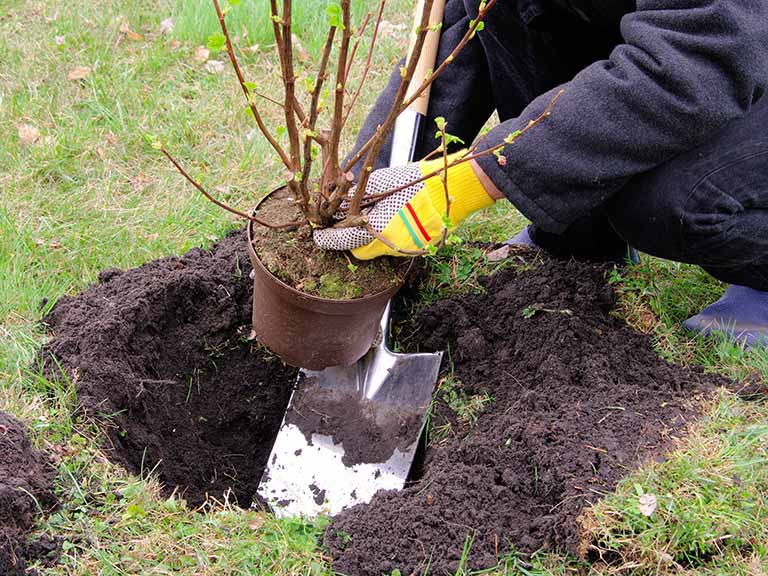

There is nothing difficult in planting black currant pygmy
Video: recommendations for proper fit
Protection from pests and diseases
The black currant variety Pygmy is affected by white spot.First, brown spots up to 3 cm wide appear on the leaves. Then the center of the spot turns white. The disease can lead to complete leaf fall. Preventively, in the fall, all the leaves from under the currant bush are removed, the soil is dug up in the fall and spring. Before awakening the kidneys, the bushes are sprayed with copper sulfate. When a disease appears in the summer, after harvesting, the bushes are treated with Bordeaux liquid.
Modern acaricidal preparations are used against the tick.
Growing large and sweet berries with unique absorbent properties is fun for people who love gardening.


The name of the Pygmy currant variety in people who first heard it, is very likely to be associated with small berries and a sore mouth. And completely in vain. The berry is large-fruited and very sweet. A description of the rules of planting and leaving - below.
- 1 Variety description
- 2 Planting currants
- 3 Care
- 4 Disease and pest control
- 5 Pests of currants
- 6 Harvesting and using the crop
- 7 Reviews of gardeners about the variety
Preparing for winter
Preparation of currant bushes "Pygmy" for wintering requires several characteristic manipulations. The first pre-winter watering is best planned for the first half of October. It should be abundant. Sufficient to cover the entire root system, up to a depth of 40 cm.
After the foliage falls off, it should be collected and removed from the site. In this case, it is better to dig up the soil. Spraying bushes and soil is required to prevent diseases and parasites. For this procedure, it is better to stock up on a solution of urea and copper sulfate.
Cooking method! Dissolve 700 grams of carbamide and 10 grams of copper sulfate in a bucket of water. To stir thoroughly.
The "Pygmy" variety was originally bred for conditions with unfavorable climates and has excellent frost resistance. There is no special need to shelter it for the winter. If the site is blown by the wind, or in case of severe frosts, selective strapping of the bushes is performed.
The rope is attached to a thick branch near the ground. The bush is tied in a spiral from the bottom up. The end of the rope is fixed at the top, on top of it the bush is wrapped several times with agrofibre.
Description of the variety
The authorship of the variety belongs to breeders from the South Ural Research Institute of Horticulture and Potato Growing in Chelyabinsk V.S. Ilyin and N.A. Ilyina. The variety was registered in the State Register of Plants in 1999.
Appearance
The bush is medium-sized, up to 1.5–2 m, not spreading. Shoots are straight. The leaves are large, five-lobed, green, shiny, the top is smoothed. The bark of the shoots has a pinkish tint, the buds are bronze in color. Brush of medium length, with 6-10 large, pale-colored flowers. Berries ripen unevenly, have a fairly large spread in size. The color of the fruit is deep black, the skin is thin.
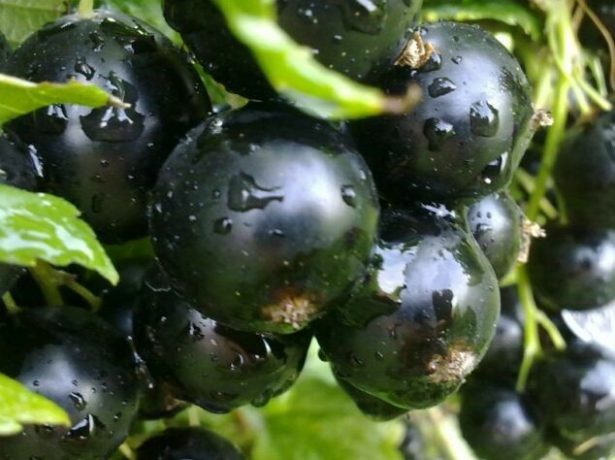

Black currant berries Pygmy
The variety has increased resistance to extreme temperature conditions and is zoned for the Volgo-Vyatka, Ural, West Siberian, East Siberian, Far Eastern regions.
Table: characteristics of the Pygmy variety
| Characteristic | Indicator |
| Berry size medium / maximum | 2.3 / 7.7 g |
| Productivity from one bush | 5.7 kg |
| Sugar content in berries | 9,4% |
| Vitamin C content | 150 mg / 100 g |
| Tasting assessment | 5 |
| Frost resistance | High, withstands cold up to -35 ° C, resistant to late spring frosts |
| Heat resistance | High, up to 30оС |
| Disease resistance | High to powdery mildew, medium to anthracnose and septoria |
| Pest resistance | Weak to kidney mites |
| Demanding soil | Average |
| Demanding watering | Average |
| Demanding feeding | Average |
| Transportability | Average |
Suitable region and climate
The variety was grown in a continental climate, therefore it has characteristic features:
- adapted for vegetation in conditions of lack of moisture and dry air;
- withstands spring night frosts even during the budding period;
- resistant to low temperatures.
On the territory of Russia, the Pygmy variety is zoned in 5 regions:
- Ural;
- East and West Siberian;
- Volgo-Vyatsky;
- Far Eastern.
Resistance to aggressive natural factors and viruses makes it possible to grow a crop practically throughout the entire territory of the Russian Federation, with the exception of the northern regions. Pygmy has become widespread and is successfully grown on the territory of neighboring states.
In the photo there are ripe berries of the Pygmy variety


Planting currants
It is preferable to plant black currants in the fall, 2-3 weeks before the onset of stable frosts, when the soil begins to set. Spring planting has one fundamental drawback. In currants, buds begin to grow very early. And for their good development, an already developed root system is needed. Therefore, in early spring, in March, there is only a small window in time in order to have time to plant a seedling. At this time, the already thawed upper layer of the soil is required, and the average daily temperature should not yet trigger the vegetative processes of active growth of currants. A seedling planted at the wrong time is likely to take root, but it will be weakened. Of course, all this concerns the planting of plants with an open root system. Planting currants purchased in a container can be carried out all season.
Disease and pest control
From the list of possible diseases of the currant, Pygmy is absolutely resistant to powdery mildew, partially resistant to anthracnose and slightly resistant to septoria.
Table: diseases and control measures
| Disease | Manifestation of the disease | Disease prevention | Control measures |
| White spot (septoria) | The appearance on the leaves of spots of arbitrary shape with a brown border. Over time, black dots may appear. The leaves dry up and fall off. | Regular application of full mineral fertilizer under the bush. | Spraying the bush with a 0.4% solution of copper sulfate. Consumption rate for an adult bush is 2 liters. The use of drugs Cuprozan or Ftolan according to the instructions for them. |
| Terry (reversion) | Viral disease. The leaves become smaller and acquire a purple hue, the flowers become double, the berries are not tied. | Regular application of phosphorus and potassium fertilizers, as well as foliar dressing with trace elements. | There are no effective drugs against terry. The diseased bush is uprooted and burned. |
| Anthracnose | The leaves are covered with small brown spots, subsequently dry up. The berries become smaller, the growth of young shoots stops. | Do not leave diseased leaves on the bush. They are torn off and burned. | Control measures are similar to those for septoria. |
| Goblet rust | Orange spots appear on the inner surfaces of the leaves with spore pads resembling small glasses. The leaves die off, the ripening of the berries stops. | Improving the fertility of the soil under the bush by introducing humus or compost. The diseased leaves are torn off and burned. | Spraying the bush with a 1% solution of Bordeaux liquid after flowering. |
| Drying of shoots (tuberculariosis) | Bulges appear on the bark of the shoots, they die off, starting from the top. | Cutting and burning damaged shoots. | Spraying the bush with a 1% solution of Bordeaux liquid in early spring, after flowering and in autumn. |
How to care for a shrub?
Pygmy is a currant that does not like windy and shaded areas, therefore, when choosing a place for planting it, you need to take these features into account. The ideal time for disembarkation is the beginning of autumn. The first thing to do is to cultivate the soil. After digging, remove all the roots of weeds and loosen the soil. Next, we prepare a hole with a diameter of 60 cm and a depth of 40 cm.
To prepare fertile soil, you will need:
- superphosphate - 200 g;
- potassium sulfate - 60 g;
- 1 bucket of compost;
- 0.5 l of wood ash.
In order for the plant to grow quickly, we make a slight slope of the seedling when planting, no more than 45 degrees. After that, the currants need to be well watered and cut off the branches, leaving about 3 buds. The next stage is mulching the soil under the seedling. For these purposes, peat or sawdust is suitable.
To increase yields, experts recommend planting several varieties of currants in one area.
Watering is very important for the plant, especially when the fruit begins to ripen. The plot is filled with water at the rate of 30-50 liters per 1 m2. You also need to do watering in the fall when fertilizers are applied.
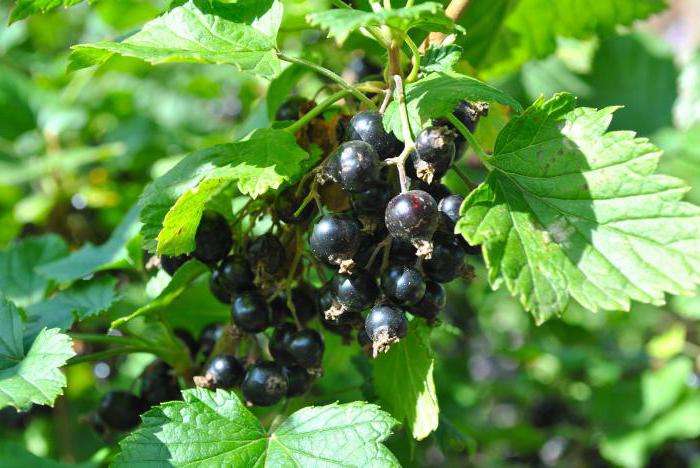

Plant feeding is carried out in the 3rd year after planting. In the spring, before flowering, currants are fertilized with a liquid mullein. Ammonium nitrate (20-30 g) is applied when the plant has bloomed. In the autumn period, the soil under each bush is fertilized with a prepared composition, which includes:
- Phosphorus (50 g).
- Potassium (40 g).
- Compost (half a bucket).

